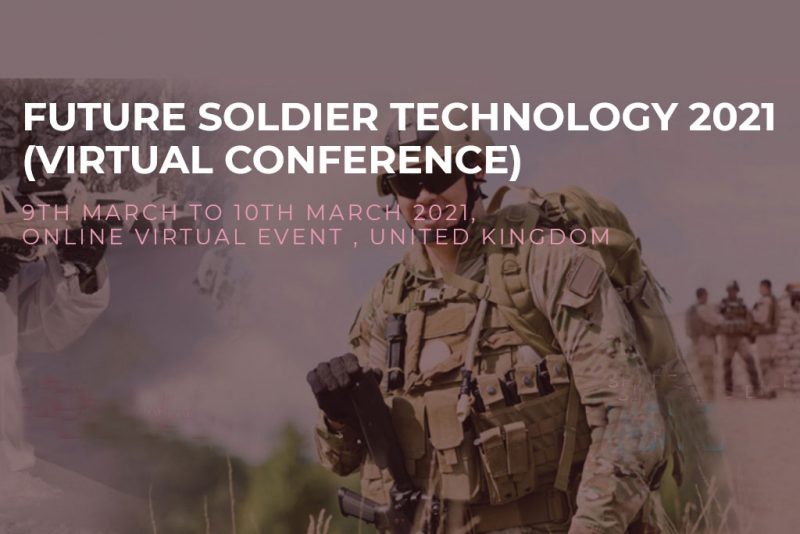Future Soldier Technologies: a comprehensive discussion
By Paolo Valpolini
Organised by SMi Group Ltd the on-line Future Soldier Technology conference took place on 9-10 March, another virtual event due to the pandemic. Over 20 speakers discussed numerous topics relevant to soldier equipment, the overall aim being that of increasing soldiers efficiency and performances on the field, in order to give them an edge over their opponents, improving effectiveness and reducing risks, something that goes on since the beginning of human confrontations millennium ago, but which has now reached a much higher technological level, although human factors remain at the forefront.
Compared to the soldier systems of the past, which tended to be relatively “closed” systems, the current trend is to look at systems more capable to be spiral upgraded along the time, which requires not only more open architectures but in many cases also a different acquisition policy as well as different relationship between the military and industry. SWAP, size weight and power, remains one of the key issues for all what the soldier has to carry, the burden being however not only physical but also cognitive, many information reaching the dismounted soldier, hence the need to provide him only what he really needs and in the best form. As for the physical burden, the advent of robotized carriers might partly mitigate the problem, adding that of man-machine teaming. Not all armies agree on same human-machine interfaces, some being definitely against PDAs or any sort of system that do not allow the soldier to carry his or her weapon at ready, fighting being the ultimate task of the military. The importance of night vision systems has been stressed by many nations, who illustrated their respective programmes in that field, targeting systems allowing enhancing soldier lethality being also a topic of discussion. Communications were of course another key element, as all data would flow through comms, as well as navigation issues, especially in contested domains where GPS might be unavailable. Another emerging need, as we add C4I systems to soldier’s equipment, is to ensure a smooth transition from dismounted to mounted and vice versa, as well as providing immediate access to reloading systems as soon as soldiers board the vehicle, to ensure them maximum power endurance the next time they debus. Power, protection and cognitive load were topics dealt with not only by operationals and industry, but also by scientists from different organisations.
This short note wants just to give EDR On-Line readers a flavour of the topics that were discussed during the conference organised by the SMi Group. In the coming days and weeks we will post articles on selected matters, trying to provide our readers with an overview of the most interesting subjects discussed in this two-day event.




